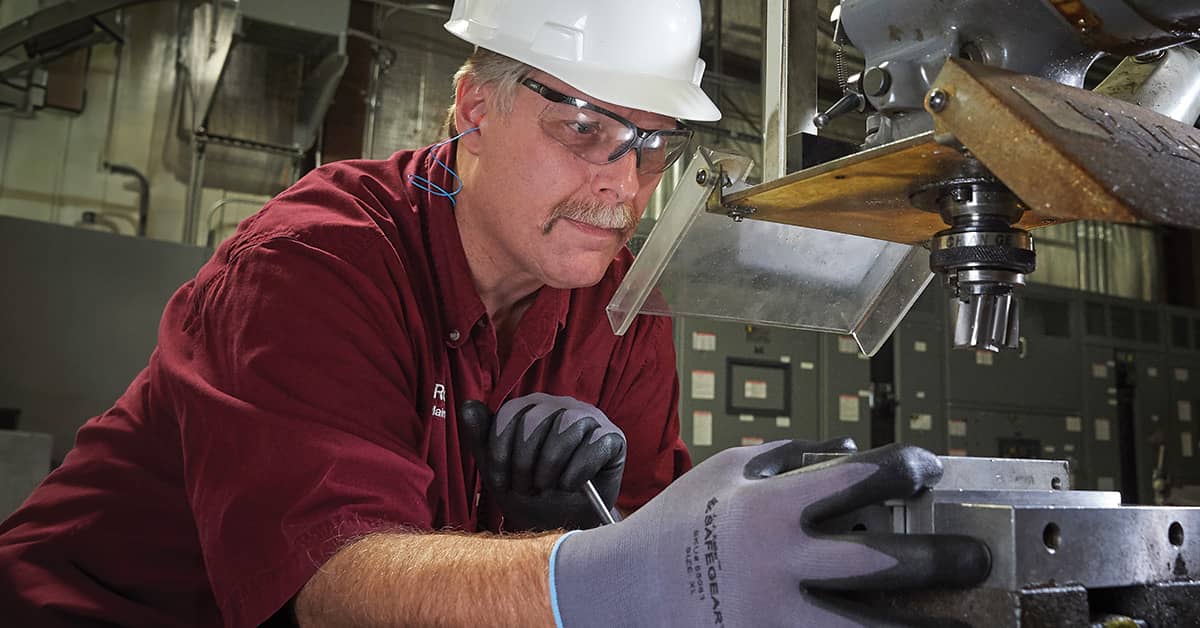Lock down the facts on machine guarding myths
Date Posted: 01/08/2024

The machine guarding and lockout requirements are two sides of the same coin. Guards keep workers safe during normal operations, while lockout procedures protect those who must bypass guards. Unfortunately, the following misconceptions can put workers at risk.
We don’t have any machines that require guards.
If machines have moving parts, they likely need guards. Employers commonly fail to guard shafts, pulleys, belts, or other power transmission components. And if you need guards, you also need lockout procedures.
Determine if a machine-specific standard under 1910 Subpart O applies, or if the equipment falls under 1910.212 for general machinery. Provide one or more methods of guarding to protect the operator and others in the area from hazards such as nip points, rotating parts, or flying chips and sparks.
New machines come with proper guards, or existing guards are compliant.
While some new machines come with sufficient guards, that’s not always the case. It may be possible to purchase guards from the manufacturer or a third party. Employers can also build in-house guards, but they must be designed and installed by a qualified professional and should not create additional hazards.
Employees can use an emergency stop button or interlocked guard for minor service.
Using an interlocked guard can allow some minor service, but not all tasks qualify as minor service. If a task requires removing or bypassing a guard or requires placing a body part in a point of operation, the lockout requirements apply. For minor service, employees must use procedures that offer protection equivalent to lockout.
Engaging an emergency stop button does not allow an employee to bypass a guard. The lockout standard at 1910.147 clarifies that emergency stop buttons or similar devices interrupt a circuit but “are not energy isolating devices,” which means they don’t provide equivalent protection.
Removing jams, cleaning, and changing tools qualify as minor service.
The minor service exception can apply to tasks that are “routine, repetitive, and integral to the use of the equipment for production.” However, employers should also review the lockout standard’s definition for “servicing and/or maintenance.” It includes installing, setting up, adjusting, inspecting, and modifying machines. The definition gives examples such as lubrication, cleaning or unjamming, and making adjustments or tool changes “where the employee may be exposed to the unexpected energization or startup of the equipment or release of hazardous energy.”
Employees might perform some of those tasks under the minor service exception, if they can accomplish the tasks using procedures that offer protection equivalent to lockout. For example, opening an interlocked guard may be sufficient for adjusting, lubricating, cleaning, clearing jams, or making tool changes if the worker is not exposed to hazardous energy or release of stored energy. If you determine that the minor service exception applies, train employees to safely perform those tasks and strictly follow established procedures so they don’t put themselves at risk.
We don’t need lockout training because contractors perform the maintenance.
Even if contractors perform the actual lockout and maintenance, employees who use the machines that get locked out need training as “affected” employees. OSHA requires employers to provide instruction on the purpose and use of the energy control procedure. In addition, other employees who work in areas where lockout procedures are used may need similar instruction.
How Safety Management Suite Can Help
Ensuring compliance with machine guarding and lockout procedures involves workplace evaluations, employee training, and documented procedures. The Plans & Policies tool in the J. J. Keller® SAFETY MANAGEMENT SUITE can help. It offers numerous plans that employers can modify as needed, including templates to outline your company’s machine guarding plan and energy control plan.
E-mail Newsletter
Sign up to receive the weekly EHS Insider email newsletter for safety articles, news headlines, regulatory alerts, industry events, webcasts, and more.